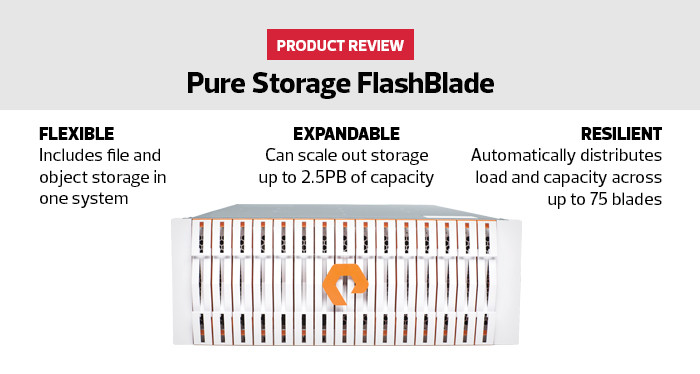Pure Storage has included sophisticated features: Metadata, files and objects are distributed across multiple blades, ensuring redundancy, fault tolerance and improved I/O, since responses stream from multiple blades simultaneously. The system supports standard storage protocols, including Amazon S3 objects, NFS, SMB and HTTP, as well as block-level devices, with built-in thin provisioning, compression, encryption and data locking, and snapshots.
It’s also fast enough (about 1 gigabyte per second, per blade) to support thousands of systems for virtual desktops as well as data lakes, Big Data and HPC systems with one set of five chassis.
With speed, power and an extensive feature set, the FlashBlade system is a versatile solution for any institution.
MORE FROM EDTECH: Check out how universities can benefit from implementing a flash storage solution.
Features Support Redundancy and Rapid Reconstruction
Pure Storage engineered the FlashBlade system for flash and NVMe flash. Many older systems have a long history of data center use, but this is a mixed blessing.
Those systems also have a long legacy of old protocols that are based on hard disk standards, which means that old commands and methods of accessing data (dating back to the 1960s) are included in many modern standards for addressing storage.
This adds overhead to modern devices that are more like RAM than traditional rotating storage in the way that they’re accessed. Pure Storage bypasses those old protocols and standards with an all-flash system.
To ensure redundancy and fault tolerance, the FlashBlade system uses erasure coding as well as variable block sizes, distributing files across multiple blades in multiple chassis with sufficient error correction so that even if any of the pieces are lost, the whole file can be quickly reconstructed.
In addition, pulling files from multiple locations on multiple blades increases throughput. Here, that happens automatically, with no need for planning on the part of the administrator.
The system is elastic and dynamic, self-optimizing for maximum throughput on files that see the most use, without sacrificing performance on other files.
Pure Storage FlashBlade
Blades: Each blade has an 8-core Xeon processor
Connectivity: 8 40Gbps Ethernet or 32 10Gbps Ethernet connectors per chassis
High-Performance Storage: PCIe flash plus DRAM
Power Supply: Four redundant power supplies in N+2 configuration
Chassis: 4U chassis holds up to 15 blades
Custom Configurations: REST APIs









